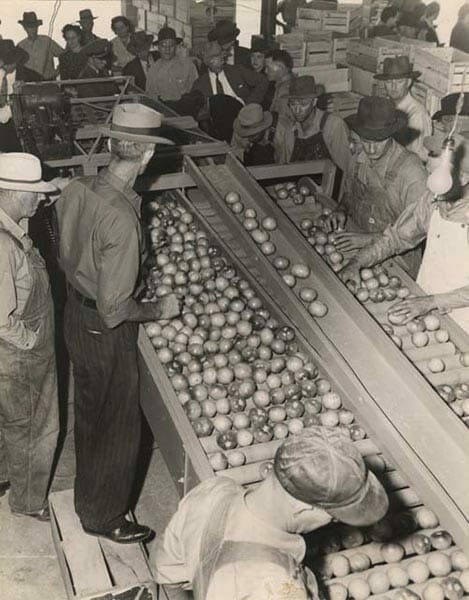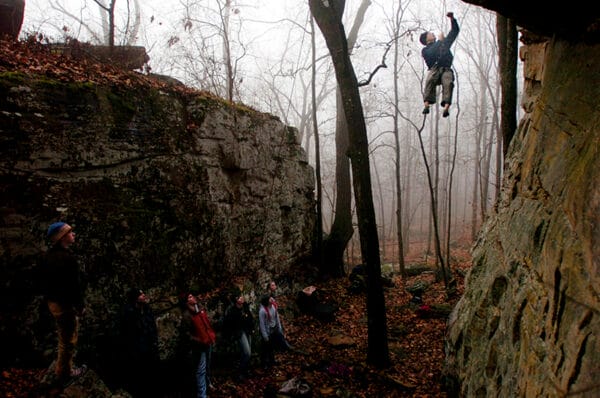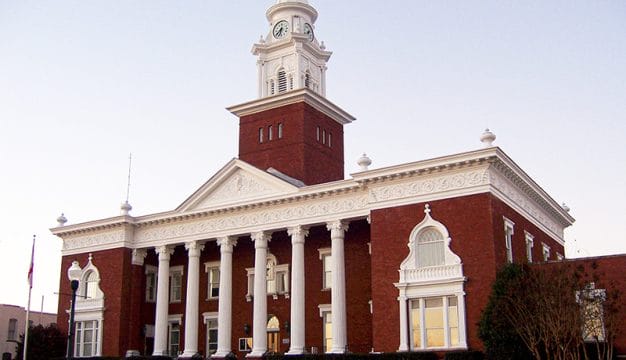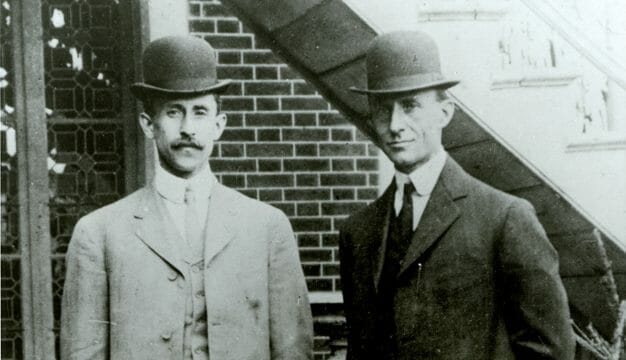Oneonta
The seat of Blount County, Oneonta was incorporated in February 1891 and has a mayor-council form of government. The town was named for Oneonta, New York, by an early resident.
History
 Oneonta Farmers Market, ca. 1940s
The original county seat was located in Blountsville from 1819 or 1820 to 1888. After Cullman County was created in 1877 from part of Blount County, Blountsville was no longer centrally located, and county residents voted to relocate the seat to Oneonta in 1888. Troops led by Andrew Jackson and John Coffee passed through during the Creek War of 1813-14, and several of them later settled in the area. The town itself had arisen with the arrival of the railroad in the 1880s. Many early buildings in town were covered in tin, which gave rise to the nickname “Tin City.” Oneonta’s proximity to various mineral deposits, including red iron ore, coal, limestone, and manganese, prompted some industrialization.
Oneonta Farmers Market, ca. 1940s
The original county seat was located in Blountsville from 1819 or 1820 to 1888. After Cullman County was created in 1877 from part of Blount County, Blountsville was no longer centrally located, and county residents voted to relocate the seat to Oneonta in 1888. Troops led by Andrew Jackson and John Coffee passed through during the Creek War of 1813-14, and several of them later settled in the area. The town itself had arisen with the arrival of the railroad in the 1880s. Many early buildings in town were covered in tin, which gave rise to the nickname “Tin City.” Oneonta’s proximity to various mineral deposits, including red iron ore, coal, limestone, and manganese, prompted some industrialization.
Demographics
According to 2020 Census estimates, Oneonta recorded a population of 6,550. Of that number, 91.9 percent identified themselves as white, 14.5 percent as Hispanic, 4.1 percent as African American, 1.1 percent as two or more races, and 0.9 percent as Asian. The city’s median household income was $38,922, and per capita income was $27,280.
Employment
According to 2020 Census estimates, the workforce in Oneonta was divided among the following industrial categories:
- Educational services, and health care and social assistance (24.3 percent)
- Manufacturing (18.1 percent)
- Construction (13.5 percent)
- Professional, scientific, management, and administrative and waste management services (12.1 percent)
- Finance, insurance, and real estate, rental, and leasing (10.2 percent)
- Transportation and warehousing and utilities (6.6 percent)
- Retail trade (6.5 percent)
- Arts, entertainment, recreation, accommodation, and food services (3.3 percent)
- Public administration (2.9 percent)
- Other services, except public administration (2.1 percent)
- Wholesale trade (0.4 percent)
Education
Public education is administered by the Oneonta City School system, which oversees a K-6th grade school and a 7th-12th grade school.
Transportation
Oneonta lies between Interstate 65 to the west and Interstate 59 to the east. U.S. Route 231 and State Road 53 access the city from the southeast and northwest, State Route 75 accesses the city from the southwest and northeast, and State Route 132 accesses the city from the northeast.
Events and Places of Interest
 Palisades Park
Listed on the National Register of Historic Places in Oneonta are the Easely and Horton Mill covered bridges, which were in use from 1925 to 1949. Oneonta hosts a Covered Bridge Festival in October that features arts and craft shows, a golf tournament, and other activities. A number of buildings in Oneonta are listed in the Alabama Register of Landmarks and History, including the Murphree Log Cabin in Palisades Park (ca. 1819) and the Crump-Oliver Farm (ca. 1841). The 80-acre Palisades Park is noted for its large limestone and sandstone formations as well as the Compton School and Blackwood log cabin. The park also offers hiking trails, picnic shelters, and three buildings referred to as “lodges” available to rent for daytime activities. Other outdoor recreation facilities exist at Woodland Park and Oneonta Recreation Park.
Palisades Park
Listed on the National Register of Historic Places in Oneonta are the Easely and Horton Mill covered bridges, which were in use from 1925 to 1949. Oneonta hosts a Covered Bridge Festival in October that features arts and craft shows, a golf tournament, and other activities. A number of buildings in Oneonta are listed in the Alabama Register of Landmarks and History, including the Murphree Log Cabin in Palisades Park (ca. 1819) and the Crump-Oliver Farm (ca. 1841). The 80-acre Palisades Park is noted for its large limestone and sandstone formations as well as the Compton School and Blackwood log cabin. The park also offers hiking trails, picnic shelters, and three buildings referred to as “lodges” available to rent for daytime activities. Other outdoor recreation facilities exist at Woodland Park and Oneonta Recreation Park.
 Blount County Memorial Museum
The Blount County Memorial Museum is located in Oneonta on the courthouse square and displays items related to the county’s history as well as an archive containing numerous books and files. A Spring Fling is sponsored by the Oneonta Business Association, typically in early June, and features entertainment, children’s activities, and crafts and food sales. There are three 18-hole public golf courses in Oneonta: Heritage Golf Course, Limestone Springs Golf Club, and Whispering Pines Golf Club.
Blount County Memorial Museum
The Blount County Memorial Museum is located in Oneonta on the courthouse square and displays items related to the county’s history as well as an archive containing numerous books and files. A Spring Fling is sponsored by the Oneonta Business Association, typically in early June, and features entertainment, children’s activities, and crafts and food sales. There are three 18-hole public golf courses in Oneonta: Heritage Golf Course, Limestone Springs Golf Club, and Whispering Pines Golf Club.
Additional Resources
Heritage of Blount County. Clanton, Ala.: Heritage Publishing Consultants, 1999.



